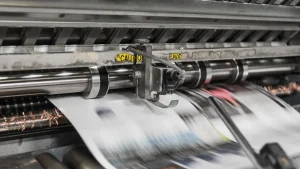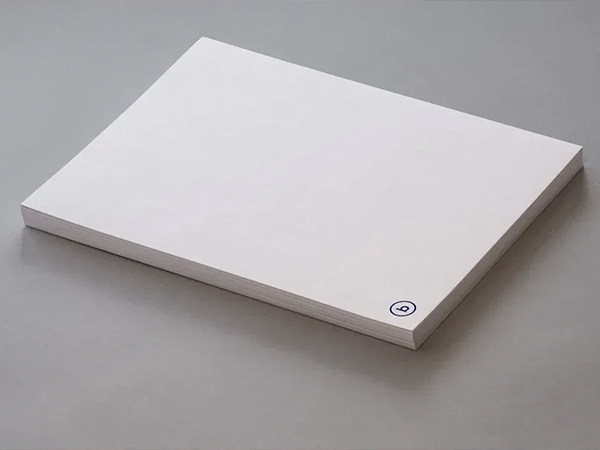
Sizing agents play a vital role in industrial paper manufacturing, directly influencing product quality and functionality. Manufacturers select between internal and surface sizing agents based on the desired balance of water resistance, printability, and durability. Internal sizing agents integrate into the paper matrix to provide bulk protection, while surface sizing agents form a protective layer for improved surface properties. Industry trends highlight the need for high-performance, eco-friendly solutions as regulations and consumer demand drive innovation in strength, printability, recyclability, and environmental impact.
Key Takeaways
- Internal sizing agents mix with pulp before sheet formation to improve water resistance and strengthen the entire paper sheet.
- Surface sizing agents apply after sheet formation, creating a protective layer that enhances print quality and surface strength.
- Choosing the right sizing agent depends on the paper’s end use, balancing water resistance, printability, durability, and environmental impact.
- Internal sizing offers better mechanical strength and durability, while surface sizing improves surface smoothness and ink control.
- Manufacturers increasingly use eco-friendly, biodegradable sizing agents and combine internal and surface methods to meet quality and sustainability goals.
Sizing Agents Overview
Internal Sizing Agents
Internal sizing agents are added directly to the paper pulp before sheet formation. These chemicals react with cellulose fibers, creating a hydrophobic barrier throughout the paper. This process improves water resistance and helps control ink absorption. Cationic rosin, alkyl ketene dimer (AKD), and alkenyl succinic anhydride (ASA) are the most common internal sizing agents in industrial paper production. Cationic rosin works best with alum under controlled pH, enhancing its interaction with pulp fibers and improving retention. AKD and ASA chemically modify the fibers, forming a water-repellent surface. AKD increases wet strength, especially in papers made from bleached softwood pulp, while rosin sizing may reduce dry strength in hardwood pulp due to its effect on fiber bonding. Internal sizing agents also influence other properties such as stiffness, foldability, and dimensional stability.
Note: Internal sizing agents play a key role in improving paper machine runnability by enhancing sheet formation and reducing fiber flocculation.
Surface Sizing Agents
Surface sizing agents are applied after the paper sheet forms, usually at the size press. These agents create a thin film on the paper surface, which repels water and enhances printability. Surface sizing agents reduce ink absorption, prevent ink bleeding, and improve surface strength. Polyvinyl alcohol (PVA), often combined with oxidized starch, is a popular choice for surface sizing. PVA’s film-forming ability boosts both mechanical and surface properties, such as strength and air permeability. Surface sizing agents also help increase tensile strength, tear resistance, and folding endurance. By forming a protective layer, they improve the paper’s appearance and performance during printing and converting processes.
- Primary functions of sizing agents in industrial paper production:
- Improve water resistance by creating hydrophobic barriers
- Reduce ink absorption and enhance printability
- Increase surface strength and durability
- Affect stiffness, foldability, and dimensional stability
- Enhance paper machine runnability
Types and Application Methods

Common Chemicals Used
Industrial papermaking relies on a range of chemicals to achieve desired paper properties. The selection depends on the type of sizing—internal or surface—and the specific performance requirements. The following table summarizes the most common chemicals and their characteristics:
| Sizing Type | Common Chemicals Used | Purpose/Effect |
|---|---|---|
|
Internal Sizing |
Alkyl ketene dimer (AKD), Alkenyl succinic anhydride (ASA), Rosin, Wax-based sizes |
Applied during papermaking to improve water resistance and durability |
|
Surface Sizing |
Modified starches, Gelatine, Acrylic co-polymers, Waxes |
Applied on paper surface to enhance printability, surface strength, and water repellency |
Manufacturers often choose AKD and ASA for neutral or alkaline processes, as these agents stabilize fillers like calcium carbonate and provide long-lasting hydrophobicity. Rosin, a natural resin, remains popular for acidic processes due to its cost-effectiveness. For surface applications, starch-based solutions dominate because of their biodegradability and low cost. Synthetic polymers such as polyvinyl alcohol (PVA) and polyacrylamide (PAM) offer enhanced strength and durability, while casein and gelatine improve printability and surface finish.
Tip: Selecting the right chemical depends on the paper grade, end-use, and compatibility with other additives.
Application Processes
Papermakers apply internal and surface sizing agents at different stages of production, each with distinct methods and considerations. The table below outlines the main application processes:
| Application Method | Description | Application Point in Paper Machine | Key Considerations and Challenges |
|---|---|---|---|
|
Internal (Wet-end) Sizing |
Sizing agents added into pulp slurry during stock preparation, before sheet formation. |
Thick stock or thin stock portion of stock prep; before headbox |
Chemical additives distributed throughout the web; retention varies; potential deposits on forming fabric; cycle-up issues due to recirculated water; uniform Z-direction distribution but less targeted. |
|
Spray Application |
Additives sprayed onto the wet web during forming section. |
Forming section (wet web) |
Issues with overspray accumulation, uneven distribution, and nozzle plugging. |
|
Surface (Size Press) Sizing |
Additives applied to the surface of a dry sheet, typically at the size press. |
Size press, calender stack, or coater |
Applied after drying; does not benefit from wet sheet chemistry fixation; allows surface-targeted application. |
|
Foam-assisted Application |
Novel method to target sizing agent distribution within the paper web. |
Can be applied in various stages, including wet-end or surface |
Enables targeted distribution; potentially improves efficiency and reduces chemical use. |
Internal sizing agents such as AKD, ASA, or rosin are introduced directly into the pulp furnish at the wet end. This approach ensures hydrophobicity throughout the fiber matrix. Surface sizing agents, including starch derivatives and synthetic polymers, are applied after sheet formation but before final drying. Size presses, film presses, and coating methods like blade or rod coating deliver a uniform layer to both sides of the sheet. Process parameters such as viscosity, temperature, and drying rate require careful control to achieve optimal results.
Strength Comparison
Internal vs. Surface
Mechanical strength remains a critical factor in industrial paper production. Manufacturers often evaluate the impact of internal and surface sizing agents on the final product’s durability and performance. Internal sizing agents, when added to the pulp before sheet formation, interact directly with cellulose fibers. Recent laboratory studies show that certain internal sizing agents, such as those combining (3-glycidoxypropyl) trimethoxy (GPS) with natural rosin, form covalent bonds with cellulose. This chemical bonding, confirmed by FTIR and XPS analyses, leads to significant improvements in both mechanical strength and hydrophobicity. Papers treated with these agents exhibit enhanced durability and resistance to water, outperforming those sized with traditional rosin, which relies on weaker hydrogen bonds or charge neutralization.
Surface sizing agents, in contrast, are applied after the sheet forms, typically at the size press. These agents create a protective film on the paper’s surface, filling capillaries and improving surface strength. However, they do not chemically bond with the fibers. Instead, they provide physical reinforcement, which mainly benefits the paper’s surface properties rather than its internal structure. As a result, surface sizing agents offer less improvement in overall mechanical strength compared to internal sizing agents.
Note: Internal sizing agents penetrate the entire sheet, providing uniform strength and longevity, while surface sizing agents primarily enhance surface durability and printability.
The following table summarizes the key differences in strength performance:
| Aspect | Internal Sizing Agents | Surface Sizing Agents |
|---|---|---|
|
Mechanism |
Chemical bonding to fibers |
Physical surface reinforcement |
|
Strength Impact |
Enhances mechanical strength throughout sheet |
Improves surface strength only |
|
Durability |
High, due to covalent bonding |
Moderate, limited to surface layer |
|
Application Stage |
Before sheet formation |
After sheet formation |
Manufacturers seeking superior mechanical strength and long-lasting performance often prefer internal sizing agents. Surface sizing agents remain valuable for applications where surface quality and printability take priority.
Printability and Surface Quality

Sizing Agents and Printability
Printability remains a top priority for industrial paper producers. The choice of sizing agents directly affects ink absorption, print sharpness, and overall print quality. Different types of sizing agents offer unique benefits for print performance, as shown in the table below:
| Sizing Agent Type | Influence on Printability and Paper Quality |
|---|---|
|
Rosin Sizing Agents |
Traditionally dominant; provide water resistance and durability essential for print quality; still widely used in traditional markets. |
|
Synthetic Sizing Agents |
Deliver versatility and superior performance; enhance printability, reduce water absorption, and improve strength; suitable for high-end and specialty papers. |
|
Starch Sizing Agents |
Derived from renewable sources; biodegradable; improve quality and strength, especially in recycled papers; support sustainability trends. |
|
Others (e.g., wax emulsions, polymeric agents) |
Used in specialty papers for high gloss and moisture resistance; directly impact print quality for niche applications. |
Surface sizing agents, such as starch and alum, play a critical role in controlling ink absorption and preventing excessive ink penetration. They improve ink adhesion and reduce ink spread, resulting in sharper and crisper images. Internal sizing, added during pulp production, enhances water resistance and durability, which indirectly influences ink absorption. Paper wetting agents often complement sizing agents by improving surface properties and ink distribution, supporting uniform print quality and high-speed printing.
- Surface sizing agents:
- Enhance smoothness and printability.
- Directly control ink absorption.
- Prevent excessive ink penetration.
- Improve ink adhesion and reduce ink spread.
- Internal sizing agents:
- Improve water resistance and durability.
- Indirectly influence ink absorption.
Surface Properties
Surface properties such as smoothness and gloss significantly impact print quality. Alkyl Ketene Dimer (AKD) sizing agents, used both internally and on the surface, increase water resistance and accelerate curing speed. They also improve the retention of fines and fillers, which leads to smoother surfaces and higher gloss. Profilometry studies show that papers treated with surface sizing agents like chitosan exhibit much smoother surfaces than unsized papers. A continuous film forms on the paper surface, preventing ink tackiness and supporting high-quality writing and printing. Internal sizing distributes agents throughout the sheet, enhancing water resistance and overall paper quality. Smoother surfaces yield better gloss and printability, making surface sizing essential for premium printing grades.
Recyclability and Environmental Impact
Internal Sizing Agents
Internal sizing agents play a crucial role in recycled paper production. Environmental studies on old corrugated container pulp show that the combination of cationic rosin and alum significantly increases water resistance in recycled paper. This improvement does not compromise mechanical properties such as burst, tensile, or tear strength. Alum acts as an anionic trash collector and stabilizer, which enhances the retention and orientation of cationic rosin on fibers. This process increases hydrophobicity and compensates for the complex chemistry of recycled fibers. Researchers have identified optimal dosages—1.0% alum and 0.5% cationic rosin—as both cost-effective and environmentally favorable. The sequence of addition and pH conditions further improve performance. These findings support the use of internal sizing agents in recycled paper, maintaining both recyclability and sustainability.
However, several environmental concerns remain.
- Stringent regulations restrict the use of certain chemicals, raising compliance costs.
- Dependence on natural raw materials like starch and rosin can create supply chain and environmental challenges.
- The industry faces difficulty recovering sizing agents from industrial wastewater, with 8–12% of applied agents lost in effluents.
- Over 65% of paper mills report sizing losses exceeding 4 kilograms per ton, increasing treatment costs and environmental impact.
- Volatility in raw material prices, especially for petrochemical-derived agents, adds further challenges.
- The industry continues to innovate, developing biodegradable and non-toxic alternatives to address these issues.
Surface Sizing Agents
Surface sizing agents have seen rapid innovation in response to environmental and regulatory pressures. Manufacturers increasingly adopt solid forms, especially in recycled board production. Biodegradable and bio-based agents, such as natural starch and protein blends, are gaining popularity. These agents reduce reliance on petrochemicals and align with sustainability goals. Regulatory frameworks like EU REACH encourage the use of biodegradable starch and protein agents, while tariffs drive domestic sourcing and alternative chemistries.
| Aspect | Surface Sizing Agents | Internal Sizing Agents |
|---|---|---|
|
Solid forms, biodegradable starch/protein agents increasing |
Predominantly liquid forms |
|
|
Environmental Impact |
Lower footprint, reduced petrochemical use |
Less emphasis on biodegradability |
|
Application & End-Use |
Printing, writing, packaging, board |
Niche specialty grades |
|
Chemical Composition |
Hybrid natural-synthetic blends |
Mainly synthetic chemistries |
|
Market & Regulatory Drivers |
Biodegradable agents favored by regulations |
Not directly compared |
|
Technological Integration |
Digital dosing, smart manufacturing, waste reduction |
Not detailed |
Surface sizing agents lead in printing and packaging segments, offering improved printability and abrasion resistance. The adoption of digital dosing and real-time quality control further reduces waste and enhances consistency. These trends position surface sizing agents as a preferred choice for manufacturers seeking to lower their environmental footprint and comply with evolving regulations.
Industrial Preferences
When to Use Internal Sizing
Industrial paper manufacturers select internal sizing for applications that demand robust water resistance and structural integrity throughout the paper sheet. Internal sizing becomes essential when the paper must withstand exposure to moisture during both production and end use. Manufacturers often choose this approach for the following scenarios:
- Water resistance is a primary requirement, especially for papers used with water-based inks or in humid environments.
- Bleached board products, such as packaging and food containers, benefit from internal sizing, typically using rosin size to ensure durability.
- Fine paper grades containing precipitated calcium carbonate require synthetic resin internal sizing to maintain performance and print quality.
- Papers produced with high hardness furnishes, where calcium or magnesium ions are present, rely on internal sizing to manage sizing efficiency and prevent issues with filler retention.
- Pre-reacted alum-rosin compositions improve sizing performance under challenging pH and consistency conditions, particularly in both thick and thin stock furnishes.
- Manufacturers often combine internal and surface sizing for specialty papers, such as aseptic packaging, to achieve maximum water resistance and barrier properties.
Note: Internal sizing works best when manufacturers control pH and consistency during stock preparation. This ensures optimal distribution and retention of the sizing material within the fiber matrix.
Manufacturers also consider production scale and cost. Synthetic internal sizing, such as alkyl ketene dimer (AKD), offers efficiency and consistency for high-volume operations. Internal sizing reduces labor intensity compared to traditional gelatin tub sizing, making it suitable for large-scale industrial processes.
When to Use Surface Sizing
Surface sizing finds preference in situations where tactile qualities, printability, and surface strength take priority. Manufacturers apply surface sizing after sheet formation to enhance the paper’s interaction with inks and coatings. The following factors guide the decision to use surface sizing:
- The paper requires improved print sharpness, reduced ink bleed, and enhanced surface smoothness for high-quality printing and converting.
- Applications demand specific tactile textures or gloss, such as in premium writing papers, art papers, and specialty packaging.
- Surface sizing allows for targeted modification of the paper’s exterior, supporting complex artistic techniques like watercolor layering, ink wash, or mixed media.
- Environmental conditions, such as humidity and storage, influence the choice. Gelatin-based surface sizing may degrade in damp climates, while starch-based or synthetic agents offer greater stability.
- Manufacturers seeking to meet sustainability goals increasingly adopt plant-based or biodegradable surface sizing agents, such as starches and cellulose derivatives.
- Cost and production flexibility play a role. Surface sizing enables rapid adjustments to paper properties without altering the core furnish, supporting diverse product lines and smaller production runs.
Tip: Many manufacturers use a dual-sizing approach, combining internal and surface sizing to balance durability with refined surface characteristics. This strategy supports both functional and aesthetic requirements in demanding applications.
Manufacturers must also manage variables such as water purity, timing, and ambient humidity during drying. These factors affect the final behavior of the paper and require careful process control to ensure consistent sizing performance.
Pros and Cons Summary
Internal Sizing Agents
Internal sizing agents offer several distinct advantages for industrial paper production. They provide uniform and predictable sizing throughout the entire sheet, which ensures consistent performance in demanding applications. These agents enhance print quality by preventing ink feathering or bleeding, making them suitable for high-quality printing and packaging. Internal sizing agents also increase resistance to liquid penetration, which is essential for moisture-sensitive products. By reinforcing the fiber network, they improve the strength and durability of paper, while also supporting better dimensional stability and reducing issues like curling or warping.
Key Advantages:
- Uniform sizing across the paper sheet
- Improved print quality and ink control
- Enhanced resistance to water and other liquids
- Increased strength and durability
- Better dimensional stability
However, internal sizing agents present several challenges. Their production and use can release volatile organic compounds (VOCs), raising environmental concerns. Paper mills must invest in intensive wastewater treatment to remove residual chemicals, which increases operational costs. Compliance with strict environmental regulations further complicates their use, especially when harmful chemicals are involved. Fluctuating raw material prices, such as those for polymers and starch, can impact profitability. Limited awareness and adoption in some regions, along with competition from alternative technologies, also affect market growth.
Key Disadvantages:
- Environmental concerns due to VOC emissions
- High wastewater treatment and compliance costs
- Raw material price volatility
- Limited adoption in developing markets
- Competition from alternative and eco-friendly technologies
Practical Tip: Industrial users should evaluate the balance between performance benefits and environmental compliance costs when selecting internal sizing agents. Monitoring regulatory changes and exploring eco-friendly alternatives can help maintain competitiveness.
Surface Sizing Agents
Surface sizing agents play a critical role in enhancing the surface properties of paper. They form a continuous film that binds fibers tightly, increasing both tensile and compression strength. These agents significantly improve printability by limiting ink penetration, resulting in sharper images and vibrant colors. Surface sizing agents also provide a hydrophobic barrier, which improves moisture resistance and dimensional stability. Starch-based agents, in particular, offer environmental benefits such as biodegradability, low toxicity, and support for sustainability goals.
| Aspect | Advantages | Disadvantages / Challenges |
|---|---|---|
|
Surface Strength |
Enhances surface strength and durability |
Achieving uniform application can be difficult; balancing immediate and long-term strength is challenging |
|
Printability & Ink Holdout |
Improves print quality and color vibrancy |
Requires careful selection for different printing methods; improper choice can reduce print performance |
|
Water Repellency |
Provides hydrophobic surface films, improving moisture resistance |
Natural agents may increase water absorption; synthetic agents can raise environmental and cost concerns |
|
Mechanical & Wear Resistance |
Increases resistance to abrasion and handling |
Some synthetics complicate recycling; raw material variability affects results |
|
Environmental Impact |
Starch-based agents are biodegradable and renewable |
Synthetic polymers may be costly and less eco-friendly; natural raw material variability poses challenges |
|
Market & Innovation |
Drives innovation toward bio-based, PFAS-free solutions |
Ongoing challenges include cost, consistency, and balancing eco-friendliness with performance |
Industry experts note that starch-based surface sizing agents align well with circular economy principles. These agents reduce the carbon footprint and support regulatory compliance. However, raw material variability and higher production costs can pose challenges. Synthetic polymers, while offering superior performance, may complicate recycling and increase environmental impact. The industry continues to innovate, focusing on enzymatic modification and PFAS-free additives to improve sustainability without sacrificing performance.
Note: Industrial users should match surface sizing agents to specific application needs, considering print method, environmental regulations, and end-use requirements. Ongoing innovation in bio-based and biodegradable agents offers new opportunities for sustainable production.
Practical Considerations for Industrial Users:
- Assess water resistance, print quality, and strength requirements for each application.
- Weigh the benefits of natural versus synthetic sizing agents in terms of performance and sustainability.
- Monitor environmental regulations and raw material market trends to manage costs and compliance.
- Consider technological advancements and regional market dynamics when selecting sizing agents for paper production.
Industrial paper producers must match sizing strategies to their specific goals. The table below highlights key differences in industrial application:
| Aspect | PolyDADMAC-based Agent | Cationised Starch-based Agent |
|---|---|---|
|
Environmental Impact |
Non-renewable, recyclability concerns |
Renewable, eco-friendly |
|
Print Quality |
Good, less sharp |
Sharper, better ink density |
|
Ink Setting Time |
Suitable for inkjet |
Too long, causes smudging |
|
Industrial Feasibility |
Suitable |
Not recommended |
Producers seeking sharp print quality and sustainability may favor cationised starch, but PolyDADMAC-based agents offer better industrial feasibility. Each operation should assess end-use needs and consult technical experts to optimize performance and compliance.
FAQ
What is the main difference between internal and surface sizing agents?
Internal sizing agents mix with the pulp before sheet formation. Surface sizing agents apply to the paper after it forms. Internal sizing changes the entire sheet, while surface sizing targets only the outer layer.
Can manufacturers use both internal and surface sizing together?
Yes. Many manufacturers combine both methods. This approach improves water resistance, printability, and surface strength. Dual sizing helps meet demanding product requirements in packaging and specialty papers.
Are surface sizing agents more environmentally friendly than internal sizing agents?
Surface sizing agents often use biodegradable materials like starch. These agents usually have a lower environmental impact. Internal sizing agents may use synthetic chemicals, which can increase wastewater treatment needs.
How do sizing agents affect recycled paper production?
Sizing agents improve water resistance and strength in recycled paper. Internal sizing helps maintain performance, while surface sizing enhances print quality. Manufacturers must manage chemical losses and comply with environmental regulations.
What factors influence the choice of sizing agent in industrial paper production?
Manufacturers consider end-use, print quality, water resistance, cost, and environmental regulations. They select sizing agents based on the specific needs of each paper grade and production process.






